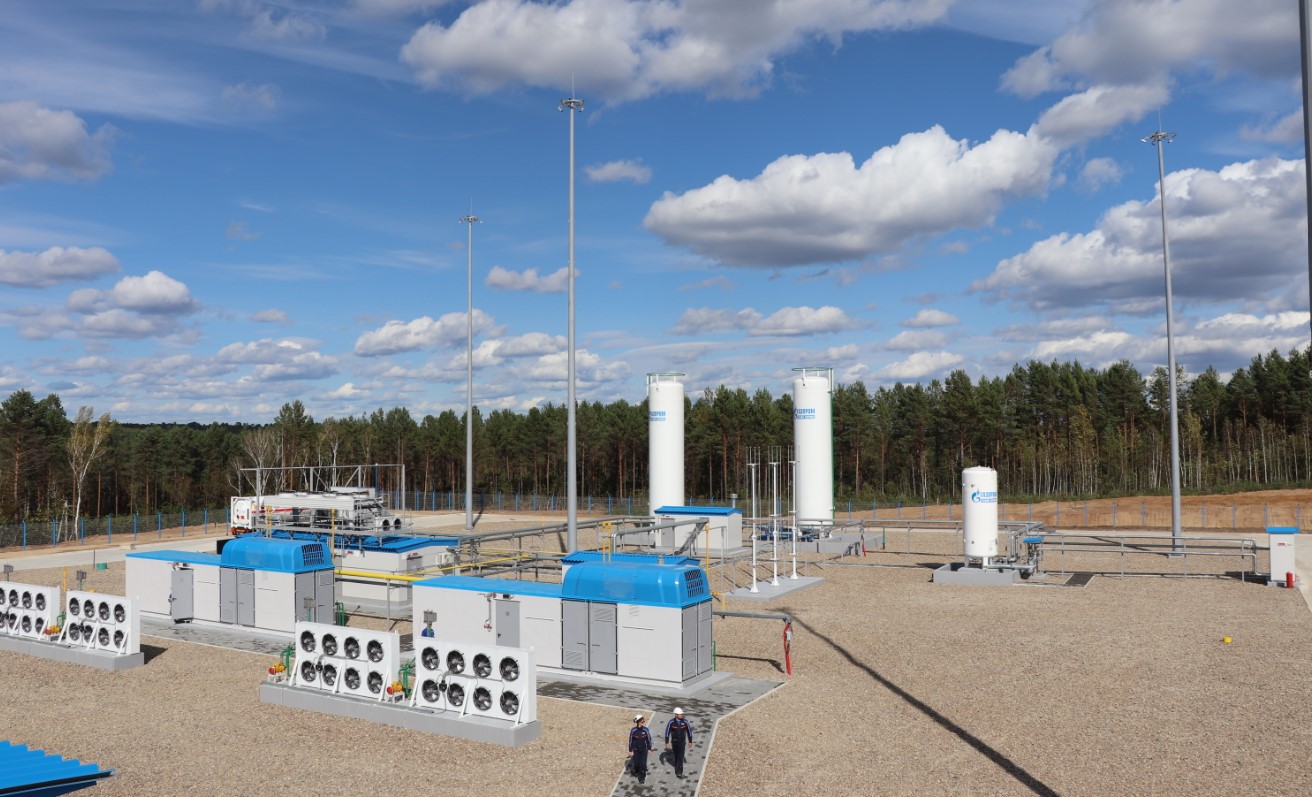Russian gas giant Gazprom has recently launched a small-scale liquefaction plant in the Amur region of Russia’s Far East.
The liquefaction plant, implemented by Gazprom’s unit Gazprom Helium Service, is located in the Svobodnensky district in the Amur region.
Back in 2021, Gazprom Helium Service and Russian Far East and Arctic Development Corporation (RFEADC) signed a cooperation agreement for the creation of this liquefaction complex.
According to a Gazprom statement issued last month, this is the region’s first such facility.
The newly built complex is the key facility in the pilot project for off-grid gas supplies in the Amur region, it said.
The capacity of the complex is 1.5 tons of LNG per hour, or 12,600 tons per year.
Gazprom said the product output will be built up as the consumers become ready to receive liquefied natural gas.
The main LNG consumer will be a gas boiler house which is currently under construction in the Amurselmash urban district of Belogorsk, the second largest city of the Amur region.
Once ready, the new boiler house will replace the existing fuel oil one which currently provides heat and hot water to 37 apartment buildings, two kindergartens, a school, and a community center, Gazprom said.
LNG-powered freight trucks will bring the fuel to Belogorsk in special cryogenic tanks.
As of today, the construction of the receiving, storage, and regasification system is nearing completion in the vicinity of the gas boiler house, Gazprom said .
The system will serve to store LNG at constant temperature, convert it to gaseous form, and then supply it to the boiler house, it said.
Capacity boost
Besides the boiler house, the new facility can provide LNG refueling to Gazprom Helium Service’s vehicle fleet and, in the future, to the vehicles of the Amur gas processing plant.
The possibility of LNG supplies to the Vostochny Cosmodrome will also be ensured in line with the memorandum signed between Gazprom Helium Service and Space Rocket Center Progress; other commercial consumers will be provided with the possibility of LNG supplies as well, the firm said.
Also, the government of the Amur Region will examine the efficiency of the boiler house in the Amurselmash urban district and consider the possibilities to convert other boiler houses of the region to LNG, Gazprom said.
When creating the plant Gazprom has foreseen that the production capacity of the facility can be promptly doubled to reach 3 tons per hour, or 25,200 tons per year, it said.
Apart from this facility, Gazprom Helium Service operates a small-scale natural gas liquefaction unit located in the territory of the helium hub in Vladivostok.

